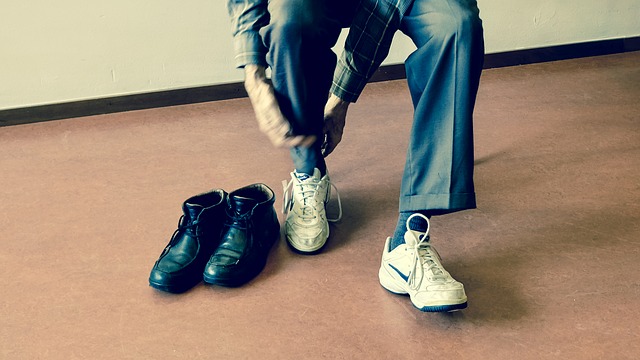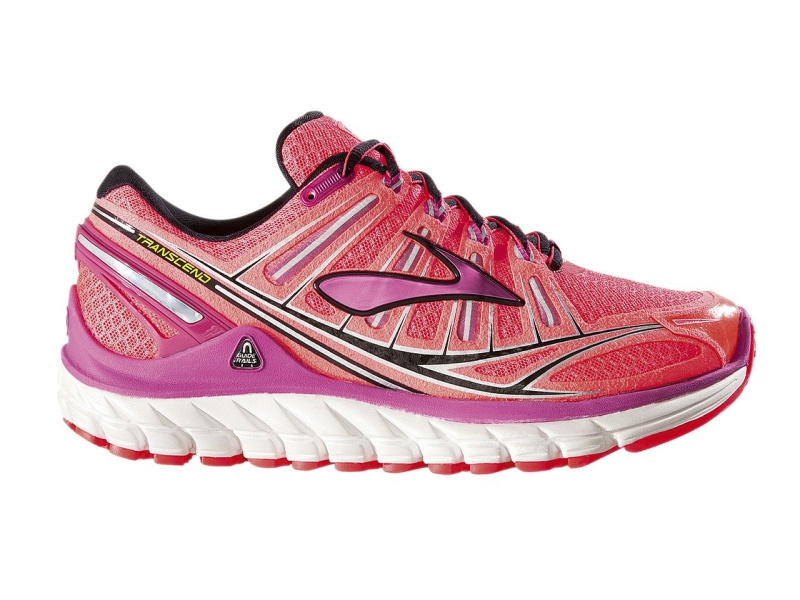Also known as, fallen arches, flat foot refers to a condition where the arch of the foot collapses completely, thus making the whole foot to come into contact with the ground. Most people with this condition avoid engaging in physical activities like running or jogging, for fear of sustaining leg and foot injuries.
The good news is that an increasing number of footwear brands are now producing running shoes for flat feet. These shoes are designed to correct and prevent some of the issues that runners with flat feet encounter while aiding in mobility. However, if it’s the first time that you are buying flat shoes for flat feet, the process can be confusing and overwhelming. As much as the final choice will depend on your preferences, here are the key factors to consider when buying running shoes for flat feet.
Have Your Feet Measured
Just because you’ve been wearing a size eight shoe, your entire adulthood doesn’t mean that any pair of shoes labeled size eight will always be a perfect fit for your feet. Different types of shoes, including running shoes for flat feet, are made using different lasts. For instance, Nike running shoes are made with a different upper from the one that New Balance or Asics use to make their running shoes. The last used to make a certain pair of shoes will affect the fit, shape of the upper as well as how it’s stitched together. Therefore, before you head out to go and buy running shoes, it’s important to have your feet measured first. Having your feet measured by a professional is the most accurate method of determining your actual size, the extent of your flat-footedness as well as your foot structure. And all these factors can determine the fit and comfort of your shoes. If your feet have been measured by a professional, they will advise you on the shoes that you should purchase. With that information, the shoe buying process will not be confusing.
Buy Shoes in the Afternoon
Now that you already know the actual length and size of your feet, you can now start visiting different footwear outlets to purchase your running shoes. But as much as you might be tempted to purchase shoes in the morning, you should avoid it at all costs. Your feet will swell and expand in the course of the day. For instance, if it was size 8 in the morning, it might have expanded by about half an inch by 5 pm in the evening. As much as this expansion is temporary, it can affect the fit and comfort of your running or walking shoes. Therefore, it’s highly advisable to buy your shoes later in the day. When you buy shoes in the evening, it will allow you to choose a pair that offers the best fit and comfort as compared to a pair that you might have bought early in the morning.
Fit With Socks
Most people tend to overlook socks when buying shoes. Unless you are planning to be wearing your shoes without socks – which is not advisable – you should always carry your running socks whenever you are buying running shoes for flat feet. Socks can make a significant difference when it comes to the fit of any pair of shoes. Wearing socks when fitting shoes will ensure that you get an optimum fit. Also, you should remember that different types of socks are meant for different shoes. For instance, if you are buying hiking boots, you will need to wear them with thick socks. On the other hand, if you are shopping for running shoes, you will definitely try them on with a thinner pair of socks. As much as this might appear like something inconsequential, the thickness of your socks will also affect the fit of your shoes. Besides, you don’t want to be wearing thick socks with your running shoes on a hot, sunny afternoon.
Ensure they Have Adequate Toe Room
Any pair of running shoes, including those for flat feet, should have adequate toe space. Wearing shoes that don’t have ample toe room can be extremely painful and uncomfortable. Apart from discomfort, you might end up injuring your big toe when you run with shoes that don’t have adequate toe room. As much as shoes may expand slightly after wearing them for some time, they should have adequate wiggle room for your toes even when they are new. It doesn’t matter whether a certain pair of shoes has the most cushioning or their support is exceptional. If they don’t have adequate wiggle room for your toes, then it’s highly advisable to consider other options. So, how can you tell whether a particular pair of shoes have adequate toe space? Well, one of the easiest ways of measuring the toe space is by inserting your thumb in the rear part of the shoes, while making sure that the toes are touching the front part of the shoes. If the thumb can’t fit, then you should go up by approximately half a size. On the other hand, if it’s sliding in too easily, then you should consider downsizing by at least half an inch.
Opt for Wider Designs
If you have flat feet, there is a high chance that you also have wide feet. The good news is that there are numerous shoes on the market, which have been specifically designed for people with wider feet. Choosing a wider design will make a significant difference in the fit and comfort levels of your shoes. Unfortunately, your preferred pair of shoes or brands might not be available in wider designs. If your preferred pair of shoes is only available in normal width and sizes, you should consider going at least half a size up or even a full size up, if the shoes are not available in half sizes. In short, you need to explore all the available options, to ensure you get a proper fit.
Consider Your Gait Cycle
Gait cycle refers to the movement of the foot that begins when your heel strikes the ground, all the way until the same foot comes into contact with the ground again. If you have flat feet, it’s highly advisable to visit a professional, who will examine your feet and conduct a gait cycle analysis. The results of that analysis should help you to choose a pair of running shoes that offer adequate cushioning and support.
Comfort Over Styling
Most running shoes for flat feet tend to be slightly bulkier than ordinary running shoes. And this can be attributed to the additional cushioning material that has been added in some parts of these shoes. Therefore, if lightweight, minimalist running shoes are your preferred style, then you will have to deal with the added weight. As much as lightweight, minimalist shoes appear great, they usually lack the required level of arch support and cushioning that flat-footed runners need, for preventing pronation and injuries. However, this is not to mean that all running shoes for flat feet are not good looking. You will come across several types on the market, which look good and stylish. But if you were to choose between style and support, you should always choose a pair of shoes that offers adequate support and comfort. Whenever you are buying running shoes for flat feet, you should always think of fit and comfort, and not fashion or style.
Closing Remarks
Choosing the right pair of running shoes for flat feet will help you to enjoy an active, healthy lifestyle. You will be able to run, train and exercise, without worrying about pain or discomfort on your feet. Also, the right pair of shoes will help to protect injuries, while mitigating other issues that may arise.





0 comments